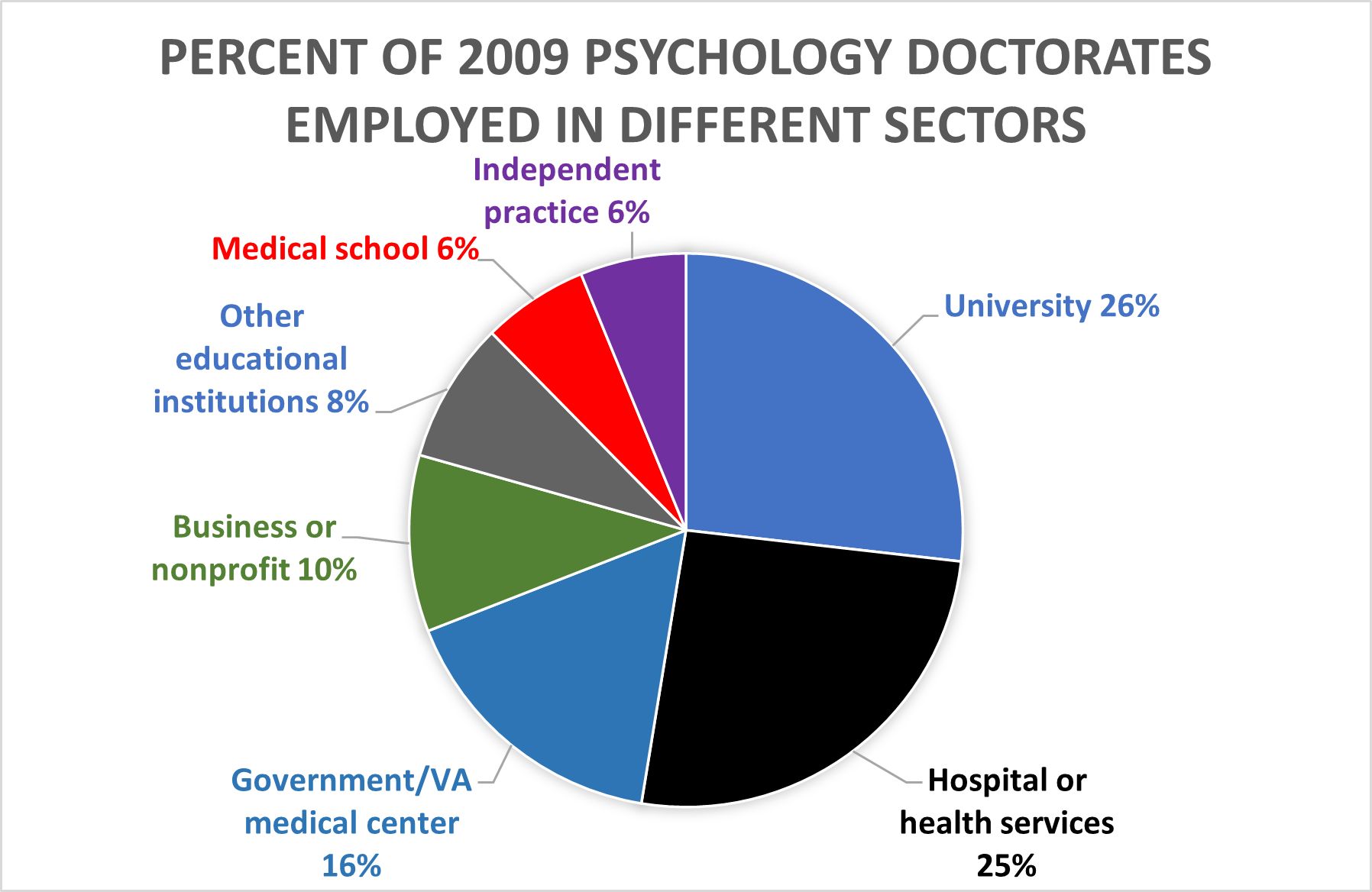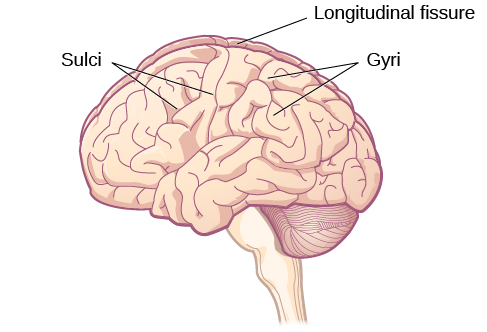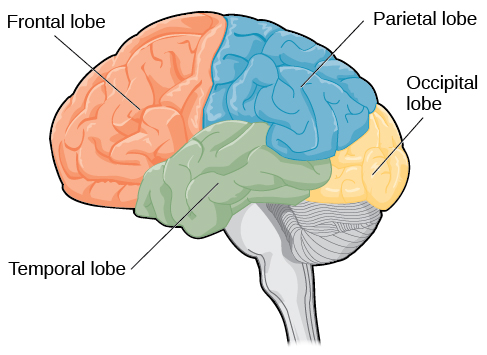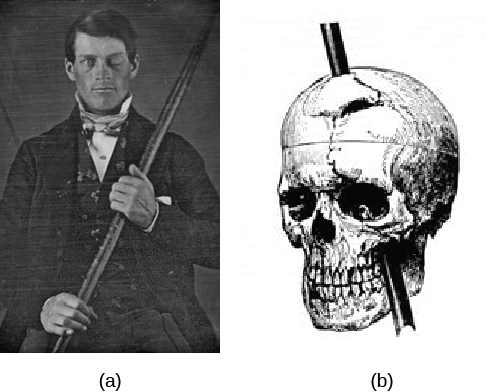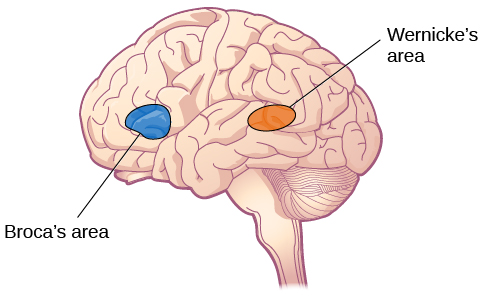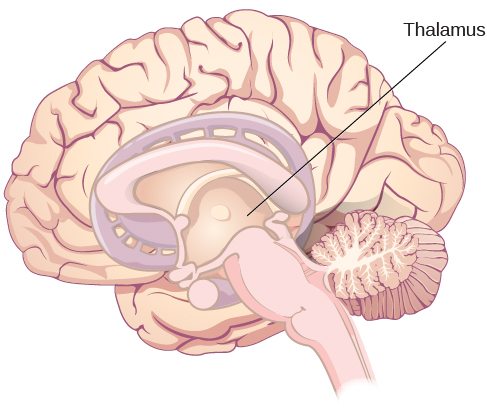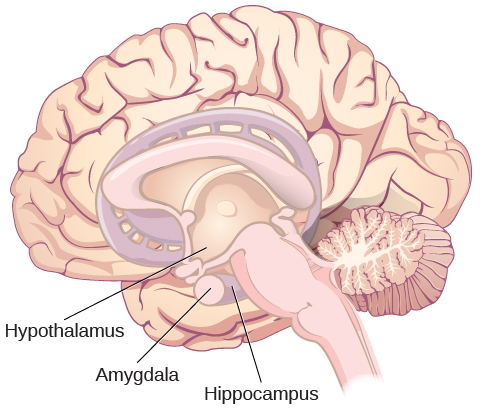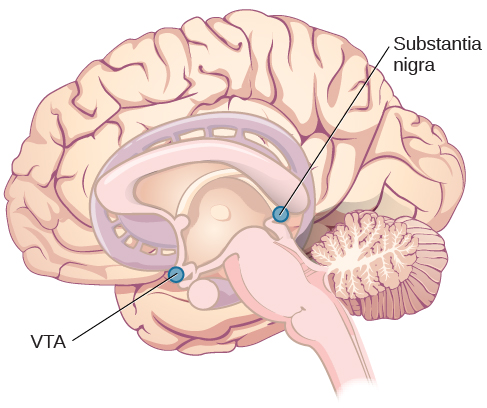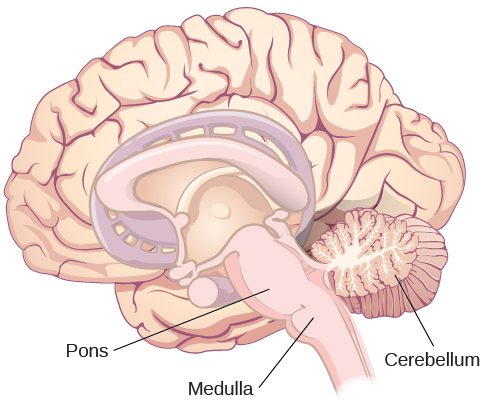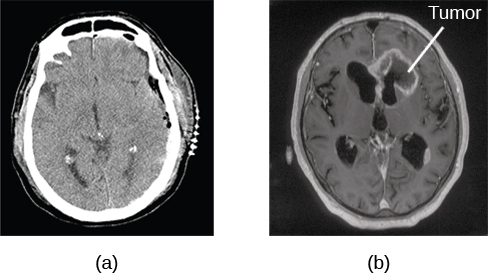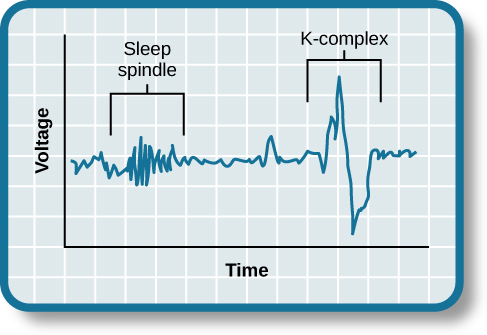Abela, J. R., & Hankin, B. L. (2011). Rumination as a vulnerability factor to depression during the transition from early to middle adolescence: A multiwave longitudinal study. Journal of Abnormal Psychology, 120, 259–271.
Abramowitz, J. S., & Siqueland, L. (2013). Obsessive-compulsive disorder. In L. G. Castonguay & T. F. Oltmanns (Eds.), Psychopathology: From science to clinical practice (pp. 143–171). New York, NY: Guilford Press.
Abramson, L. Y., Metalsky, G. I., & Alloy, L. B. (1989). Hopelessness depression: A theory- based subtype of depression. Psychological Review, 96, 358–372.
Afifi, T. O., Mather, A., Boman, J., Fleisher, W., Enns, M. W., MacMillan, H., & Sareen, J. (2010). Childhood adversity and personality disorder: Results from a nationally representative population-based survey. Journal of Psychiatric Research, 45, 814–822.
Agerbo, E., Nordentoft, M., & Mortensen, P. B. (2002). Familial, psychiatric, and socioeconomic risk factors for suicide in young people: Nested case-control study. British Medical Journal, 325, 74–77.
Aghukwa, C. N. (2012). Care seeking and beliefs about the cause of mental illness among Nigerian psychiatric patients and their families. Psychiatric Services, 63, 616–618.
Aikins, D. E., & Craske, M. G. (2001). Cognitive theories of generalized anxiety disorder. Psychiatric Clinics of North America, 24, 57–74.
Akinbami, L. J., Liu, X., Pastor, P., & Reuben, C. A. (2011, August). Attention deficit hyperactivity disorder among children aged 5–17 years in the United States, 1998–2009 (NCHS data brief No. 70). Hyattsville, MD: National Center for Health Statistics. Retrieved from http://www.cdc.gov/nchs/data/databriefs/db70.pdf
Alden, L. E., & Bieling, P. (1998). Interpersonal consequences in the pursuit of safety. Behaviour Research and Therapy, 36, 53–64.
Alegria, A. A., Blanco, C., Petry, N. M., Skodol, A. E., Liu, S. M., & Grant, B. (2013). Sex differences in antisocial personality disorder: Results from the National Epidemiological Survey on Alcohol and Related Conditions. Personality Disorders: Theory, Research, and Treatment, 4, 214–222.
American Psychiatric Association. (2013). Diagnostic and statistical manual of mental disorders (5th ed.). Washington, DC: Author.
Andreasen, N. C. (1987). The diagnosis of schizophrenia. Schizophrenia Bulletin, 13, 9–22.
Andréasson, S., Allbeck, P., Engström, A., & Rydberg, U. (1987). Cannabis and schizophrenia: A longitudinal study of Swedish conscripts. Lancet, 330, 1483–1486.
Asberg, M., Thorén, P., Träskman, L., Bertilsson, L., & Ringberger, V. (1976). “Serotonin depression”—a biochemical subgroup within the affective disorders? Science, 191(4226), 478–480. doi:10.1126/science.1246632
Asperger’s syndrome dropped from psychiatrists’ handbook the DSM: DSM-5, latest revision of Diagnostic and Statistical Manual, merges Asperger’s with autism and widens dyslexia category. (2012, December 1). The Guardian. Retrieved from http://www.theguardian.com/society/2012/dec/02/aspergers-syndrome-dropped-psychiatric-dsm
Autism Genome Project Consortium. (2007). Mapping autism risk loci using genetic linkage and chromosomal rearrangements. Nature Genetics, 39, 319–328.
Baes, C. V. W., Tofoli, S. M. C., Martins, C. M. S., & Juruena, M. F. (2012). Assessment of the hypothalamic–pituitary–adrenal axis activity: Glucocorticoid receptor and mineralocorticoid receptor function in depression with early life stress—a systematic review. Acta Neuropsychiatrica, 24, 4–15.
Baker, L. A., Bezdjian, S., & Raine, A. (2006). Behavioral genetics: The science of antisocial behavior. Law and Contemporary Problems, 69, 7–46.
Barbaresi, W. J., Colligan, R. C., Weaver, A. L., Voigt, R. G., Killian, J. M., & Katusic, S. K. (2013). Mortality, ADHD, and psychosocial adversity in adults with childhood ADHD: A prospective study. Pediatrics, 131, 637–644.
Barker, P. (2010). The legacy of Thomas Szasz. Retrieved from http://www.centerforindependentthought.org/SzaszLegacy.html
Barkley, R. A. (2006). Attention-deficit hyperactivity disorder: A handbook for diagnosis and treatment. New York, NY: Guilford Press.
Barkley, R. A., Fischer, M., Smallish, L., & Fletcher, K. (2002). The persistence of attention-deficit/hyperactivity disorder into young adulthood as a function of reporting source and definition of disorder. Journal of Abnormal Psychology, 111, 279–289.
Battista, S. R., & Kocovski, N. L. (2010). Exploring the effect of alcohol on post-event processing specific to a social event. Cognitive Behaviour Therapy, 39, 1–10.
Baumeister, A. A., & Hawkins, M. F. (2004). The serotonin hypothesis of schizophrenia: A historical case study on the heuristic value of theory in clinical neuroscience. Journal of the History of the Neurosciences, 13, 277–291.
Beck, A. T. (1976). Cognitive therapy and the emotional disorders. New York, NY: International Universities Press.
Beck, A. T. (2008). The evolution of the cognitive model of depression and its neurobiological correlates. American Journal of Psychiatry, 165, 969–977.
Berman, A. L. (2009). School-based suicide prevention: Research advances and practice implications [Commentary]. School Psychology Review, 38, 233–238.
Bettelheim, B. (1967). The empty fortress: Infantile autism and the birth of the self. New York, NY: Free Press.
Beucke, J. C., Sepulcre, J., Talukdar, T., Linnman, C., Zschenderlein, K., Endrass, T., . . . Kathman, N. (2013). Abnormally high degree connectivity of the orbitofrontal cortex in obsessive-compulsive disorder. JAMA Psychiatry, 70, 619–629.
Biederman, J., Faraone, S. V., Hirshfeld-Becker, D. R., Friedman, D., Robin, J. A., & Rosenbaum, J. F. (2001). Patterns of psychopathology and dysfunction in high-risk children of parents with panic disorder and major depression. American Journal of Psychiatry, 158, 49–57.
Bolton, D., Rijsdijk, F., O’Connor, T. G., Perrin, S., & Eley, T. C. (2007). Obsessive-compulsive disorder, tics and anxiety in 6-year-old twins. Psychological Medicine, 37, 39–48.
Bourguignon, E. (1970). Hallucinations and trance: An anthropologist’s perspective. In W. Keup (Ed.), Origins and mechanisms of hallucination (pp. 183–190). New York, NY: Plenum Press.
Bouton, M. E., Mineka, S., & Barlow, D. H. (2001). A modern learning theory perspective on the etiology of panic disorder. Psychological Review, 108, 4–32.
Bramsen, I., Dirkzwager, A. J. E., & van der Ploeg, H. M. (2000). Predeployment personality traits and exposure to trauma as predictors of posttraumatic stress symptoms: A prospective study of former peacekeepers. American Journal of Psychiatry, 157, 1115–1119.
Bregman, J. D. (2005). Definitions and characteristics of the spectrum. In D. Zager (Ed.), Autism spectrum disorders: Identification, education, and treatment (3rd ed., pp. 3–46). Mahwah, NJ: Erlbaum.
Brewin, C. R., Andrews, B., & Valentine, J. D. (2000). Meta-analysis of risk factors for posttraumatic stress disorder in trauma-exposed adults. Journal of Consulting and Clinical Psychology, 68, 748–756.
Bremner, J. D., Krystal, J. H., Southwick, S. M., & Charney, D. S. (1996). Noradrenergic mechanisms in stress and anxiety: I. preclinical studies. Synapse, 23, 28–38.
Brown, A. S., Begg, M. D., Gravenstein, S., Schaefer, C. A., Wyatt, R. J., Breshnahan, M., . . . Susser, E. S. (2004). Serologic evidence of prenatal influenza in the etiology of schizophrenia. Archives of General Psychiatry, 61, 774–780.
Boland, R. J., & Keller, M. B. (2009). Course and outcome of depression. In I. H. Gotlib & C. L. Hammen (Eds.), Handbook of depression (pp. 23–43). New York, NY: Guilford Press.
Brent, D. A., & Bridge, J. (2003). Firearms availability and suicide: A review of the literature. American Behavioral Scientist, 46, 1192–1210.
Brown, G. W., & Harris, T. O. (1989). Depression. In G. W. Brown and T. O. Harris (Eds.), Life events and illness (pp. 49–93). New York, NY: Guilford Press.
Brown, G. W., Ban, M., Craig, T. J. K., Harris, T. O., Herbert, J., & Uher, R. (2013). Serotonin transporter length polymorphism, childhood maltreatment, and chronic depression: A specific gene-environment interaction. Depression and Anxiety, 30, 5–13.
Buchanan-Barker, P., Barker, P. (2009, February). The convenient myth of Thomas Szasz. Journal of Psychiatric and Mental Health Nursing, 16(1): 87–95. doi:10.1111/j.1365-2850.2008.01310.x
Buchsbaum, M. S., Nuechterlein, K. H., Haier, R. J., Wu, J., Sicotte, N., Hazlett, E., . . . Guich, S. (1990). Glucose metabolic rate in normal and schizophrenics during the continuous performance test assessed by positron emission tomography. British Journal of Psychiatry, 156, 216–227.
Burt, S. A. (2009). Rethinking environmental contributions to child and adolescent psychopathology: A meta-analysis of shared environmental influences. Psychological Bulletin, 135, 608–637.
Butler, L. D., & Nolen-Hoeksema, S. (1994). Gender differences in responses to depressed mood in a college sample. Sex Roles, 30, 331–346.
Byrd, R. (2002, October 17). Report to the legislature on the principal findings from the epidemiology of autism in California: A comprehensive pilot study. Retrieved from http://www.dds.ca.gov/Autism/MindReport.cfm
Cadoret, R., Yates, W., Ed., T., Woodworth, G., & Stewart, M. (1995). Genetic environmental interactions in the genesis of aggressivity and conduct disorders. Archives of General Psychiatry, 52, 916–924.
Cannon, M., Jones, P. B., & Murray, R. M. (2002). Obstetric complications and schizophrenia: Historical and meta-analytic review. American Journal of Psychiatry, 159, 1080–1092.
Casadio, P., Fernandes, C., Murray, R. M., & Di Forti, M. (2011). Cannabis use in young people: The risk for schizophrenia. Neuroscience and Biobehavioral Reviews, 35, 1779–1787.
Cardeña, E., & Gleaves, D. H. (2006). Dissociative disorders. In M. Hersen, S. M. Turner, & D. C. Beidel (Eds.), Adult psychopathology and diagnosis (pp. 473–503). Hoboken, NJ: John Wiley & Sons.
Caspi, A., Sugden, K., Moffitt, T. E., Taylor, A., Craig, I. W., Harrington, H., Poulton, R. (2003). Influence of life stress on depression: Moderation by a polymorphism in the 5-HTT gene. Science, 301(5631), 386–389.
Centers for Disease Control and Prevention. (2010, November 12). Increasing prevalence of parent-reported attention-deficit/hyperactivity disorder among children, United States, 2003–2007. Morbidity and Mortality Weekly Report, 59(44), 1439–1443.
Centers for Disease Control and Prevention. (2012). Suicide: Facts at a glance. Retrieved from http://www.cdc.gov/ViolencePrevention/pdf/Suicide_DataSheet-a.pdf
Centers for Disease Control and Prevention. (2012, March 30). Prevalence of autism spectrum disorders—autism and developmental disabilities monitoring network, 14 sites, United States, 2008. Morbidity and Mortality Weekly Report: Surveillance Summaries, 61(3), 1–19. Retrieved from http://www.cdc.gov/mmwr/pdf/ss/ss6103.pdf
Centers for Disease Control and Prevention. (2013a). Definitions: Self-directed violence. Retrieved from http://www.cdc.gov/violenceprevention/suicide/definitions.html.
Centers for Disease Control and Prevention. (2013b). National suicide statistics at a glance: Trends in suicide rates among both sexes, by age group, United States, 1991–2009. Retrieved from http://www.cdc.gov/violenceprevention/suicide/statistics/trends02.html
Charney, D. S., Woods, S. W., Nagy, L. M., Southwick, S. M., Krystal, J. H., & Heninger, G. R. (1990). Noradrenergic function in panic disorder [Supplemental material]. Journal of Clinical Psychiatry, 51, 5–11.
Clark, D. M. (1996). Panic disorder: From theory to therapy. In R. M. Rapee (Ed.), Current controversies in the anxiety disorders (pp. 318–344). New York, NY: Guilford Press.
Clauss, J. A., & Blackford, J. U. (2012). Behavioral inhibition and risk for developing social anxiety disorder: A meta-analytic study. Journal of the American Academy of Child and Adolescent Psychiatry, 51(10), 1066–1075.
Clegg, J. W. (2012). Teaching about mental health and illness through the history of the DSM. History of Psychology, 15, 364–370.
Compton, W. M., Conway, K. P., Stinson, F. S., Colliver, J. D., & Grant, B. F. (2005). Prevalence, correlates, and comorbidity of DSM-IV antisocial personality syndromes and alcohol and specific drug use disorders in the United States: Results from the national epidemiologic survey on alcohol and related conditions. Journal of Clinical Psychiatry, 66, 677–685.
Cook, M., & Mineka, S. (1989). Observational conditioning of fear to fear-relevant versus fear-irrelevant stimuli in rhesus monkeys. Journal of Abnormal Psychology, 98, 448–459.
Craske, M. G. (1999). Anxiety disorders: Psychological approaches to theory and treatment. Boulder, CO: Westview Press.
Crosby, A. E., Ortega, L., & Melanson, C. (2011). Self-directed violence surveillance: Uniform definitions and recommended data elements, version 1.0. Retrieved from http://www.cdc.gov/violenceprevention/pdf/self-directed-violence-a.pdf
Dalenberg, C. J., Brand, B. L., Gleaves, D. H., Dorahy, M. J., Loewenstein, R. J., Cardeña, E., . . . Spiegel, D. (2012). Evaluation of the evidence for the trauma and fantasy models of dissociation. Psychological Bulletin, 138, 550–588.
Sometimes Interesting: Weird, Forgotten, and Sometimes Interesting Things. (2011, July 2). Dancing mania [Web log post]. Retrieved from http://sometimes-interesting.com/2011/07/02/dancing-mania/
Davidson, R. J., Pizzagalli, D. A., & Nitschke, J. B. (2009). Representation and regulation of emotional depression: Perspectives from cognitive neuroscience. In I. H. Gotlib & C. L. Hammen (Eds.), Handbook of depression (pp. 218–248). New York, NY: Guilford Press.
Davis, K. L., Kahn, R. S., Ko., G., & Davidson, M. (1991). Dopamine in schizophrenia: A review and reconceptualization. American Journal of Psychiatry, 148, 1474–1486.
Decety, J., Skelly, L. R., & Kiehl, K. A. (2013). Brain response to empathy-eliciting scenarios involving pain in incarcerated individuals with psychopathy. JAMA Psychiatry, 70, 638–645.
Demos, J. (1983). Entertaining Satan: Witchcraft and the culture of early New England. New York, NY: Oxford University Press.
Dempsey, A. F., Schaffer, S., Singer, D., Butchart, A., Davis, M., & Freed, G. L. (2011). Alternative vaccination schedule preferences among parents of young children. Pediatrics, 128, 848–856.
DeStefano, F., Price, C. S., & Weintraub, E. S. (2013). Increasing exposures to antibody-stimulating proteins and polysaccharides in vaccines is not associated with risk of autism. The Journal of Pediatrics, 163, 561–567.
DiGrande, L., Perrin, M. A., Thorpe, L. E., Thalji, L., Murphy, J., Wu, D., . . . Brackbill, R. M. (2008). Posttraumatic stress symptoms, PTSD, and risk factors among lower Manhattan residents 2–3 years after the September 11, 2001 terrorist attacks. Journal of Traumatic Stress, 21, 264–273.
DNA project aims to count Scots redheads. (2012, November 7). British Broadcast Corporation [BBC]. Retrieved from http://www.bbc.com/news/uk-scotland-20237511
Downs, M. (2008, March 31). Autism-vaccine link: Evidence doesn’t dispel doubts [Web log post]. Retrieved from www.webmd.com/brain/autism/searching-for-answers/vaccines-autism
Dozois, D. J. A., & Beck, A. T. (2008). Cognitive schemas, beliefs and assumptions. In K. S. Dobson & D. J. A. Dozois (Eds.), Risk factors in depression (pp. 121–143). New York, NY: Academic Press.
Drevets, W. C., Bogers, W. U., & Raichle, M. E. (2002). Functional anatomical correlates of antidepressant drug treatment assessed using PET measures of regional glucose metabolism. European Neuropsychopharmacology, 12, 527–544.
Ehlers, A., & Clark, D. M. (2000). A cognitive model of posttraumatic stress disorder. Behaviour Research and Therapy, 38, 319–345.
Etzersdorfer, E., Voracek, M., & Sonneck, G. (2004). A dose-response relationship between imitational suicides and newspaper distribution. Archives of Suicide Research, 8, 137– 145.
Fabrega, H. (2007). How psychiatric conditions were made. Psychiatry, 70, 130–153.
Fitzgerald, P. B., Laird, A. R., Maller, J., & Daskalakis, Z. J. (2008). A meta-analytic study of changes in brain activation in depression. Human Brain Mapping, 29, 683–695.
Fields, T. (2010). Postpartum depression effects on early interactions, parenting, and safety practices: A review. Infant Behavior and Development, 33, 1–6.
Fisher, C. (2010, February 11). DSM-5 development process included emphasis on gender and cultural sensitivity [Web log post]. Retrieved from http://www.bmedreport.com/archives/9359
Fleischman, A., Bertolote, J. M., Belfer, M., & Beautrais, A. (2005). Completed suicide and psychiatric diagnoses in young people: A critical examination of the evidence. American Journal of Orthopsychiatry, 75, 676–683.
Foote, B., Smolin, Y., Kaplan, M., Legatt, M. E., & Lipschitz, D. (2006). Prevalence of dissociative disorders in psychiatric outpatients. American Journal of Psychiatry, 163, 623–629.
Fox, N. A., Henderson, H. A., Marshall, P. J., Nichols, K. E., & Ghera, M. M. (2005). Behavioral inhibition: Linking biology and behavior within a developmental framework. Annual Review of Psychology, 56, 235–262.
Frances, A. (2012, December 2). DSM 5 is guide not bible—ignore its ten worst changes [Web log post]. Retrieved from http://www.psychologytoday.com/blog/dsm5-in-distress/201212/dsm-5-is-guide-not-bible-ignore-its-ten-worst-changes
Freeman, A., Stone, M., Martin, D., & Reinecke, M. (2005). A review of borderline personality disorder. In A. Freeman, M. Stone, D. Martin, & M. Reinecke (Eds.), Comparative treatments for borderline personality disorder (pp. 1–20). New York, NY: Springer.
Fung, M. T., Raine, A., Loeber, R., Lynam, D. R., Steinhauer, S. R., Venables, P. H., & Stouthamer-Loeber, M. (2005). Reduced electrodermal activity in psychopathy-prone adolescents. Journal of Abnormal Psychology, 114, 187–196.
Fusar-Poli, P., Borgwardt, S., Bechdolf, A., Addington, J., Riecher-Rössler, A., Schultze-Lutter, F., . . . Yung, A. (2013). The psychosis high-risk state: A comprehensive state-of-the-art review. Archives of General Psychiatry, 70, 107–120.
Gauthier, J., Siddiqui, T. J., Huashan, P., Yokomaku, D., Hamdan, F. F., Champagne, N., . . . Rouleau, G.A. (2011). Truncating mutations in NRXN2 and NRXN1 in autism spectrum disorders and schizophrenia. Human Genetics, 130, 563–573.
Gizer, I. R., Ficks, C., & Waldman, I. D. (2009). Candidate gene studies of ADHD: A meta-analytic review. Human Genetics, 126, 51–90.
Goldstein, A. J., & Chambless, D. L. (1978). A reanalysis of agoraphobia. Behavior Therapy, 9, 47–59.
Goldstein, J. M., Buka, S. L., Seidman, L. J., & Tsuang, M. T. (2010). Specificity of familial transmission of schizophrenia psychosis spectrum and affective psychoses in the New England family study’s high-risk design. Archives of General Psychiatry, 67, 458–467.
Good, B. J., & Hinton, D. E. (2009). Panic disorder in cross-cultural and historical perspective. In D. E. Hinton & B. J. Good (Eds.), Culture and panic disorder (pp. 1–28). Stanford, CA: Stanford University Press.
Goodman, S. H., & Brand, S. R. (2009). Depression and early adverse experiences. In I. H. Gotlib & C. L. Hammen (Eds.), Handbook of depression (pp. 249–274). New York, NY: Guilford Press.
Gotlib, I. H., & Joormann, J. (2010). Cognition and depression: Current status and future directions. Annual Review of Clinical Psychology, 6, 285–312.
Gottesman, I. I. (2001). Psychopathology through a life span-genetic prism. American Psychologist, 56, 867–878.
Graybiel, A. N., & Rauch, S. L. (2000). Toward a neurobiology of obsessive-compulsive disorder. Neuron, 28, 343–347.
Green, M. F. (2001). Schizophrenia revealed: From neurons to social interactions. New York, NY: W. W. Norton.
Hackmann, A., Clark, D. M., & McManus, F. (2000). Recurrent images and early memories in social phobia. Behaviour Research and Therapy, 38, 601–610.
Halligan, S. L., Herbert, J., Goodyer, I., & Murray, L. (2007). Disturbances in morning cortisol secretion in association with maternal postnatal depression predict subsequent depressive symptomatology in adolescents. Biological Psychiatry, 62, 40–46.
Hare, R. D. (1965). Temporal gradient of fear arousal in psychopaths. Journal of Abnormal Psychology, 70, 442–445.
Hasin, D. S., Fenton, M. C., & Weissman, M. M. (2011). Epidemiology of depressive disorders. In M. T. Tsuang, M. Tohen, & P. Jones (Eds.), Textbook of psychiatric epidemiology (pp. 289–309). Hoboken, NJ: John Wiley & Sons.
Herman, J. (1997). Trauma and recovery: The aftermath of violence—from domestic abuse to political terror. New York, NY: Basic Books.
Herrenkohl, T. I., Maguin, E., Hill, K. G., Hawkins, J. D., Abbott, R. D., & Catalano, R. (2000). Developmental risk factors for youth violence. Journal of Adolescent Health, 26, 176–186.
Heston, L. L. (1966). Psychiatric disorders in foster home reared children of schizophrenic mothers. British Journal of Psychiatry, 112, 819–825.
Hettema, J. M., Neale, M. C., & Kendler, K. S. (2001). A review and meta-analysis of the genetic epidemiology of anxiety disorders. The American Journal of Psychiatry, 158, 1568–1578.
Holsboer, F., & Ising, M. (2010). Stress hormone regulation: Biological role and translation into therapy. Annual Review of Psychology, 61, 81–109.
Howes, O. D., & Kapur, S. (2009). The dopamine hypothesis of schizophrenia: Version III—The final common pathway. Schizophrenia Bulletin, 35, 549–562.
Hoza, B., Mrug, S., Gerdes, A. C., Hinshaw, S. P., Bukowski, W. M., Gold, J. A., . . . Arnold, L. E. (2005). What aspects of peer relationships are impaired in children with ADHD? Journal of Consulting and Clinical Psychology, 73, 411–423.
Hughes, V. (2007). Mercury rising. Nature Medicine, 13, 896–897.
Jellinek, M. S., & Herzog, D. B. (1999). The child. In A. M. Nicholi, Jr. (Ed.), The Harvard guide to psychiatry (pp. 585–610). Cambridge, MA: The Belknap Press of Harvard University.
Johnson, J. G., Cohen, P., Kasen, S., & Brook, J. S. (2006). Dissociative disorders among adults in the community, impaired functioning, and axis I and II comorbidity. Journal of Psychiatric Research, 40, 131–140.
Joormann, J. (2009). Cognitive aspects of depression. In I. H. Gotlib & C. L. Hammen (Eds.), Handbook of depression (pp. 298–321). New York, NY: Guilford Press.
Joyce, P. R., McKenzie, J. M., Luty, S. E., Mulder, R. T., Carter, J. D., Sullivan, P. F., & Cloninger, C. R. (2003). Temperament, childhood environment, and psychopathology as risk factors for avoidant and borderline personality disorders. Australian and New Zealand Journal of Psychiatry, 37, 756–764.
Judd, L. L. (2012). Dimensional paradigm of the long-term course of unipolar major depressive disorder. Depression and Anxiety, 29, 167–171.
Kagan, J., Reznick, J. S., & Snidman, N. (1988). Biological bases of childhood shyness. Science, 240, 167–171.
Katzelnick, D. J., Kobak, K. A., DeLeire, T., Henk, H. J., Greist, J. H., Davidson, J. R. T., . . . Helstad, C. P. (2001). Impact of generalized social anxiety disorder in managed care. The American Journal of Psychiatry, 158, 1999–2007.
Kendler, K. S., Hettema, J. M., Butera, F., Gardner, C. O., & Prescott, C. A. (2003). Life event dimensions of loss, humiliation, entrapment, and danger in the prediction of onsets of major depression and generalized anxiety. Archives of General Psychiatry, 60, 789–796.
Kennedy, A., LaVail, K., Nowak, G., Basket, M., & Landry, S. (2011). Confidence about vaccines in the United States: Understanding parents’ perceptions. Health Affairs, 30, 1151–1159.
Kessler, R. C. (1997). The effects of stressful life events on depression. Annual Review of Psychology, 48, 191–214.
Kessler, R. C. (2003). Epidemiology of women and depression. Journal of Affective Disorders, 74, 5–13.
Kessler, R. C., Berglund, P., Demler, O., Jin, R., Merikangas, K. P., & Walters, E. F. (2005). Lifetime prevalence and age-of-onset distributions of DSM-IV disorders in the National Comorbidity Survey Replication. Archives of General Psychiatry, 62, 593–602.
Kessler, R. C., Chiu, W. T., Jin, R., Ruscio, A. M., Shear, K., & Walters, E. (2006). The epidemiology of panic attacks, panic disorder, and agoraphobia in the National Comorbidity Survey Replication. Archives of General Psychiatry, 63, 415–424.
Kessler, R. C., Galea, S., Gruber, M. J., Sampson, N. A., Ursano, R. J., & Wessely, S. (2008). Trends in mental illness and suicidality after Hurricane Katrina. Molecular Psychiatry, 13, 374–384.
Kessler, R. C., Ruscio, A. M., Shear, K., & Wittchen, H. U. (2009). Epidemiology of anxiety disorders. In M. B. Stein & T. Steckler (Eds.), Behavioral neurobiology of anxiety and its treatment (pp. 21–35). New York, NY: Springer.
Kessler, R. C. Sonnega, A., Bromet, E., Hughes, M., & Nelson, C. B. (1995). Posttraumatic stress disorder in the National Comorbidity Survey. Archives of General Psychiatry, 52, 1048–1060.
Kessler, R. C., & Wang, P. S. (2009). Epidemiology of depression. In I. H. Gotlib & C. L. Hammen (Eds.), Handbook of depression (pp. 5–22). New York, NY: Guilford Press.
Khashan, A. S., Abel, K. M., McNamee, R., Pedersen, M. G., Webb, R., Baker, P., . . . Mortensen, P. B. (2008). Higher risk of offspring schizophrenia following antenatal maternal exposure to severe adverse life events. Archives of General Psychiatry, 65, 146–152.
Kinney, D. K., Barch, D. H., Chayka, B., Napoleon, S., & Munir, K. M. (2009). Environmental risk factors for autism: Do they help or cause de novo genetic mutations that contribute to the disorder? Medical Hypotheses, 74, 102–106.
Kleim, B., Gonzalo, D., & Ehlers, A. (2011). The Depressive Attributions Questionnaire (DAQ): Development of a short self-report measure of depressogenic attributions. Journal of Psychopathology and Behavioral Assessment, 33, 375–385.
Klein, R. G., Mannuzza, S., Olazagasti, M. A. R., Roizen, E., Hutchison, J. A., Lashua, E. C., & Castellanos, F. X. (2012). Clinical and functional outcome of childhood attention-deficit/hyperactivity disorder 33 years later. Archives of General Psychiatry, 69, 1295–1303.
Koenen, K. C., Stellman, J. M., Stellman, S. D., & Sommer, J. F. (2003). Risk factors for course of posttraumatic stress disorder among Vietnam veterans: A 14-year follow-up of American Legionnaires. Journal of Consulting and Clinical Psychology, 71, 980–986.
Kopell, B. H., & Greenberg, B. D. (2008). Anatomy and physiology of the basal ganglia: Implications for DBS in psychiatry. Neuroscience and Biobehavioral Reviews, 32, 408–422.
Large, M., Sharma, S., Compton, M. T., Slade, T., & Nielssen, O. (2011). Cannabis use and earlier onset of psychosis: A systematic meta-analysis. Archives of General Psychiatry, 68, 555–561.
Lasalvia, A., Zoppei, S., Van Bortel, T., Bonetto, C., Cristofalo, D., Wahlbeck, K., Thornicroft, G. (2013). Global pattern of experienced and anticipated discrimination reported by people with major depressive disorder: A cross-sectional survey. The Lancet, 381, 55–62.
Lawrie, S. M., & Abukmeil, S. S. (1998). Brain abnormality in schizophrenia: A systematic and quantitative review of volumetric magnetic resonance imaging studies. British Journal of Psychiatry, 172, 110–120.
LeMoult, J., Castonguay, L. G., Joormann, J., & McAleavey, A. (2013). Depression. In L. G. Castonguay & T. F. Oltmanns (Eds.), Psychopathology: From science to clinical practice (pp. 17–61). New York, NY: Guilford Press.
Lezenweger, M. F., Lane, M. C., Loranger, A. W., & Kessler, R. C. (2007). DSM-IV personality disorders in the National Comorbidity Survey Replication. Biological Psychiatry, 62, 553–564.
Lilienfeld, S. O., & Marino, L. (1999). Essentialism revisited: Evolutionary theory and the concept of mental disorder. Journal of Abnormal Psychology, 108, 400–411.
Linnet, K. M., Dalsgaard, S., Obel, C., Wisborg, K., Henriksen, T. B., Rodriquez, A., . . . Jarvelin, M. R. (2003). Maternal lifestyle factors in pregnancy risk of attention deficit hyperactivity disorder and associated behaviors: A review of current evidence. The American Journal of Psychiatry, 160, 1028–1040.
Livesley, J. (2008). Toward a genetically-informed model of borderline personality disorder. Journal of Personality Disorders, 22, 42–71.
Livesley, J., & Jang, K. L. (2008). The behavioral genetics of personality disorders. Annual Review of Clinical Psychology, 4, 247–274.
Loe, I. M., & Feldman, H. M. (2007). Academic and educational outcomes of children with ADHD. Journal of Pediatric Psychology, 32, 643–654.
Luxton, D. D., June, J. D., & Fairall, J. M. (2012, May). Social media and suicide: A public health perspective [Supplement 2]. American Journal of Public Health, 102(S2), S195–S200. doi:10.2105/AJPH.2011.300608
Mackin, P., & Young, A. H. (2004, May 1). The role of cortisol and depression: Exploring new opportunities for treatments. Psychiatric Times. Retrieved from http://www.psychiatrictimes.com/articles/role-cortisol-and-depression-exploring-new-opportunities-treatments
Maher, W. B., & Maher, B. A. (1985). Psychopathology: I. from ancient times to the eighteenth century. In G. A. Kimble & K. Schlesinger (Eds.), Topics in the history of psychology: Volume 2 (pp. 251–294). Hillsdale, NJ: Erlbaum.
Mann, J. J., (2003). Neurobiology of suicidal behavior. Nature Reviews Neuroscience, 4, 819–828.
Marker, C. D. (2013, March 3). Safety behaviors in social anxiety: Playing it safe in social anxiety [Web log post]. Retrieved from http://www.psychologytoday.com/blog/face-your-fear/201303/safety-behaviors-in-social-anxiety
Martens, E. J., de Jonge, P., Na, B., Cohen, B. E., Lett, H., & Whooley, M. A. (2010). Scared to death? Generalized anxiety disorder and cardiovascular events in patients with stable coronary heart disease. Archives of General Psychiatry, 67, 750–758.
Mataix-Cols, D., Frost, R. O., Pertusa, A., Clark, L. A., Saxena, S., Leckman, J. F., . . . Wilhelm, S. (2010). Hoarding disorder: A new diagnosis for DSM-V? Depression and Anxiety, 27, 556–572.
Mayes, R., & Horowitz, A. V. (2005). DSM-III and the revolution in the classification of mental illness. Journal of the History of the Behavioral Sciences, 41, 249–267.
Mazure, C. M. (1998). Life stressors as risk factors in depression. Clinical Psychology: Science and Practice, 5, 291–313.
Marshal, M. P., & Molina, B. S. G. (2006). Antisocial behaviors moderate the deviant peer pathway to substance use in children with ADHD. Journal of Clinical Child and Adolescent Psychology, 35, 216–226.
McCabe, K. (2010, January 24). Teen’s suicide prompts a look at bullying. Boston Globe. Retrieved from http://www.boston.com
McCabe, R. E., Antony, M. M., Summerfeldt, L. J., Liss, A., & Swinson, R. P. (2003). Preliminary examination of the relationship between anxiety disorders in adults and self-reported history of teasing or bullying experiences. Cognitive Behaviour Therapy, 32, 187–193.
McCann, D., Barrett, A., Cooper, A., Crumpler, D., Dalen, L., Grimshaw, K., . . . Stevenson, J. (2007). Food additives and hyperactive behaviour in 3-year-old and 8/9-year-old children in the community: A randomised, double-blinded, placebo-controlled trial. The Lancet, 370(9598), 1560–1567.
McEwen, B. S. (2005). Glucocorticoids, depression, and mood disorders: Structural remodeling in the brain. Metabolism: Clinical and Experimental, 54, 20–23.
McNally, R. J. (2003). Remembering trauma. Cambridge, MA: Harvard University Press.
Meek, S. E., Lemery-Chalfant, K., Jahromi, L. D., & Valiente, C. (2013). A review of gene-environment correlations and their implications for autism: A conceptual model. Psychological Review, 120, 497–521.
Merikangas, K. R., & Tohen, M. (2011). Epidemiology of bipolar disorder in adults and children. In M. T. Tsuang, M. Tohen, & P. Jones (Eds.), Textbook of psychiatric epidemiology (pp. 329–342). Hoboken, NJ: John Wiley & Sons.
Merikangas, K. R., Jin, R., He, J. P., Kessler, R. C., Lee, S., Sampson, N. A., Zarkov, Z. (2011). Prevalence and correlates of bipolar spectrum disorder in the World Mental Health Survey Initiative. Archives of General Psychiatry, 68, 241–251.
Mezzich, J. E. (2002). International surveys on the use of ICD-10 and related diagnostic systems. Psychopathology, 35, 72–75.
Michaud, K., Matheson, K., Kelly, O., & Anisman, H. (2008). Impact of stressors in a natural context on release of cortisol in healthy adult humans: A meta-analysis. Stress, 11, 177–197.
Mineka, S., & Cook, M. (1993). Mechanisms involved in the observational conditioning of fear. Journal of Experimental Psychology: General, 122, 23–38.
Moffitt, T. E., Caspi, A., Harrington, H., Milne, B. J., Melchior, M., Goldberg, D., & Poulton, R. (2007). Generalized anxiety disorder and depression: Childhood risk factors in a birth cohort followed to age 32. Psychological Medicine, 37, 441–452.
Moitra, E., Beard, C., Weisberg, R. B., & Keller, M. B. (2011). Occupational impairment and social anxiety disorder in a sample of primary care patients. Journal of Affective Disorders, 130, 209–212.
Molina, B. S. G., & Pelham, W. E. (2003). Childhood predictors of adolescent substance abuse in a longitudinal study of children with ADHD. Journal of Abnormal Psychology, 112, 497–507.
Moore, T. H., Zammit, S., Lingford-Hughes, A., Barnes, T. R., Jones, P. B., Burke, M., & Lewis, G. (2007). Cannabis use and risk of psychotic or affective mental health outcomes. Lancet, 370, 319–328.
Morris, E. P., Stewart, S. H., & Ham, L. S. (2005). The relationship between social anxiety disorder and alcohol use disorders: A critical review. Clinical Psychology Review, 25, 734–760.
Mowrer, O. H. (1960). Learning theory and behavior. New York, NY: John Wiley & Sons.
Nader, K. (2001). Treatment methods for childhood trauma. In J. P. Wilson, M. J. Friedman, & J. D. Lindy (Eds.), Treating psychological trauma and PTSD (pp. 278–334). New York, NY: Guilford Press.
Nanni, V., Uher, R., & Danese, A. (2012). Childhood maltreatment predicts unfavorable course of illness and treatment outcome in depression: A meta-analysis. American Journal of Psychiatry, 169, 141–151.
Nathan, D. (2011). Sybil exposed: The extraordinary story behind the famous multiple personality case. New York, NY: Free Press.
National Comorbidity Survey. (2007). NCS-R lifetime prevalence estimates [Data file]. Retrieved from http://www.hcp.med.harvard.edu/ncs/index.php
National Institute on Drug Abuse (NIDA). (2007, October). Comorbid drug use and mental illness: A research update from the National Institute on Drug Abuse. Retrieved from http://www.drugabuse.gov/sites/default/files/comorbid.pdf
Nestadt, G., Samuels, J., Riddle, M., Bienvenu, J., Liang, K. Y., LaBuda, M., . . . Hoehn-Saric, R. (2000). A family study of obsessive-compulsive disorder. Archives of General Psychiatry, 57, 358–363.
Newman, C. F. (2004). Suicidality. In S. L. Johnson & R. L. Leahy (Eds.), Psychological treatment of bipolar disorder (pp. 265–285). New York, NY: Guilford Press.
Nikolas, M. A., & Burt, S. A. (2010). Genetic and environmental influences on ADHD symptom dimensions of inattention and hyperactivity: A meta-analysis. Journal of Abnormal Psychology, 119, 1–17.
Nolen-Hoeksema, S. (1987). Sex differences in unipolar depression: Evidence and theory. Psychological Bulletin, 101, 259–282.
Nolen-Hoeksema, S. (1991). Responses to depression and their effects on the duration of depressive episodes. Journal of Abnormal Psychology, 100, 569–582.
Nolen-Hoeksema, S. & Hilt, L. M. (2009). Gender differences in depression. In I. H. Gotlib & C. L. Hammen (Eds.), Handbook of depression (pp. 386–404). New York, NY: Guilford Press.
Nolen-Hoeksema, S., Larson, J., & Grayson, C. (1999). Explaining the gender difference in depressive symptoms. Journal of Personality and Social Psychology, 77, 1061–1072.
Norberg, M. M., Calamari, J. E., Cohen, R. J., & Riemann, B. C. (2008). Quality of life in obsessive-compulsive disorder: An evaluation of impairment and a preliminary analysis of the ameliorating effects of treatment. Depression and Anxiety, 25, 248–259.
Novella, S. (2008, April 16). The increase in autism diagnoses: Two hypotheses [Web log post]. Retrieved from http://www.sciencebasedmedicine.org/the-increase-in-autism-diagnoses-two-hypotheses/
Novick, D. M., Swartz, H. A., & Frank, E. (2010). Suicide attempts in bipolar I and bipolar II disorder: A review and meta-analysis of the evidence. Bipolar Disorders, 12, 1–9.
Noyes, R. (2001). Comorbidity in generalized anxiety disorder. Psychiatric Clinics of North America, 24, 41–55.
O’Connor, R. C., Smyth, R., Ferguson, E., Ryan, C., & Williams, J. M. G. (2013). Psychological processes and repeat suicidal behavior: A four-year prospective study. Journal of Consulting and Clinical Psychology. Advance online publication. doi:10.1037/a0033751
Öhman, A., & Mineka, S. (2001). Fears, phobias, and preparedness: Toward an evolved module of fear and fear learning. Psychological Review, 108, 483–552.
Oliver, J. (2006, Summer). The myth of Thomas Szasz. The New Atlantis, 13. Retrieved from http://www.thenewatlantis.com/docLib/TNA13-Oliver.pdf
Olsson, A., & Phelps, E. A. (2007). Social learning of fear. Nature Neuroscience, 10, 1095–1102.
Oltmanns, T. F., & Castonguay, L. G. (2013). General issues in understanding and treating psychopathology. In L. G. Castonguay & T. F. Oltmanns (Eds.), Psychopathology: From science to clinical practice (pp. 1–16). New York, NY: Guilford Press.
Orr, S. P., Metzger, L. J., Lasko, N. B., Macklin, M. L., Peri, T., & Pitman, R. K. (2000). De novo conditioning in trauma-exposed individuals with and without posttraumatic stress disorder. Journal of Abnormal Psychology, 109, 290–298.
Owens, D., Horrocks, J., & House, A. (2002). Fatal and non-fatal repetition of self-harm: Systematic review. British Journal of Psychiatry, 181, 193–199.
Ozer, E. J., Best, S. R., Lipsey, T. L., & Weiss, D. S. (2003). Predictors of posttraumatic stress disorder and symptoms in adults: A meta-analysis. Psychological Bulletin, 129, 52–73.
Parker-Pope, T. (2013, May 2). Suicide rates rise sharply in U.S. The New York Times. Retrieved from http://www.nytimes.com.
Patrick, C. J., Fowles, D. C., & Krueger, R. F. (2009). Triarchic conceptualization of psychopathy: Developmental origins of disinhibition, boldness, and meanness. Development and Psychopathology, 21, 913–938.
Patterson, M. L., Iizuka, Y., Tubbs, M. E., Ansel, J., Tsutsumi, M., & Anson, J. (2007). Passing encounters east and west: Comparing Japanese and American pedestrian interactions. Journal of Nonverbal Behavior, 31, 155–166.
Pauls, D. L. (2010). The genetics of obsessive-compulsive disorder: A review. Dialogues in Clinical Neuroscience, 12, 149–163.
Paykel, E. S. (2003). Life events and affective disorders [Supplemental material]. Acta Psychiatrica Scandinavica, 108(S418), 61–66.
Pazain, M. (2010, December 2). To look or not to look? Eye contact differences in different cultures [Web log post]. Retrieved from http://www.examiner.com/article/to-look-or-not-to-look-eye-contact-differences-different-cultures
Phan, K. L., Fitzgerald, D. A., Nathan, P. J., Moore, G. J., Uhde, T. W., & Tancer, M. E. (2005). Neural substrates for voluntary suppression of negative affect: A functional magnetic resonance imaging study. Biological Psychiatry, 57, 210–219.
Phillips, D. P. (1974). The influence of suggestion on suicide: Substantive and theoretical implications of the Werther Effect. American Sociological Review, 39, 340–354.
Phillips, K. (2005). The broken mirror: Understanding and treating body dysmorphic disorder. Oxford, England: Oxford University Press.
Piper, A., & Merskey, H. (2004). The persistence of folly: A critical examination of dissociative identity disorder: Part I: The excesses of an improbable concept. Canadian Journal of Psychiatry, 49, 592–600.
Pittman, R. K. (1988). Post-traumatic stress disorder, conditioning, and network theory. Psychiatric Annals, 18, 182–189.
Pompili, M., Serafini, G., Innamorati, M., Möller-Leimkühler, A. M., Guipponi, G., Girardi, P., Tatarelli, R., & Lester, D. (2010). The hypothalamic-pituitary-adrenal axis and serotonin abnormalities: A selective overview of the implications of suicide prevention. European Archives of
Psychiatry and Clinical Neuroscience, 260, 583–600.
Pope, H. G., Jr., Barry, S. B., Bodkin, A., & Hudson, J. I. (2006). Tracking scientific interest in the dissociative disorders: A study of scientific publication output 1984–2003. Psychotherapy and Psychosomatics, 75, 19–24.
Pope, H. G., Jr., Hudson, J. I., Bodkin, J. A., & Oliva, P. S. (1998). Questionable validity of ‘dissociative amnesia’ in trauma victims: Evidence from prospective studies. British Journal of Psychiatry, 172, 210–215.
Pope, H. G., Jr., Poliakoff, M. B., Parker, M. P., Boynes, M., & Hudson, J. I. (2006). Is dissociative amnesia a culture-bound syndrome? Findings from a survey of historical literature. Psychological Medicine, 37, 225–233.
Postolache, T. T., Mortensen, P. B., Tonelli, L. H., Jiao, X., Frangakis, C., Soriano, J. J., & Qin, P. (2010). Seasonal spring peaks of suicide in victims with and without prior history of hospitalization for mood disorders. Journal of Affective Disorders, 121, 88–93.
Putnam, F.W., Guroff, J, J., Silberman, E. K., Barban, L., & Post, R. M. (1986). The clinical phenomenology of multiple personality disorder: A review of 100 recent cases. Journal of Clinical Psychiatry, 47, 285–293.
Rachman, S. (1977). The conditioning theory of fear acquisition: A critical examination. Behaviour Theory and Research, 15, 375–387.
Regier, D. A., Kuhl, E. A., & Kupfer, D. A. (2012). DSM-5: Classification and criteria changes. World Psychiatry, 12, 92–98.
Rhee, S. H., & Waldman, I. D. (2002). Genetic and environmental influences on antisocial behavior: A meta-analysis of twin and adoption studies. Psychological Bulletin, 128, 490–529.
Robinson, M. S., & Alloy, L. B. (2003). Negative cognitive styles and stress-reactive rumination interact to predict depression: A prospective study. Cognitive Therapy and Research, 27, 275–292.
Roche, T. (2002, March 18). Andrea Yates: More to the story. Time. Retrieved from http://content.time.com/time/nation/article/0,8599,218445,00.html.
Root, B. A. (2000). Understanding panic and other anxiety disorders. Jackson, MS: University Press of Mississippi.
Ross, C. A., Miller, S. D., Reagor, P., Bjornson, L., Fraser, G. A., & Anderson, G. (1990). Structured interview data on 102 cases of multiple personality disorder from four centers. The American Journal of Psychiatry, 147, 596–601.
Rothschild, A. J. (1999). Mood disorders. In A. M. Nicholi, Jr. (Ed.), The Harvard guide to psychiatry (pp. 281–307). Cambridge, MA: The Belknap Press of Harvard University.
Ruder, T. D., Hatch, G. M., Ampanozi, G., Thali, M. J., & Fischer, N. (2011). Suicide announcement on Facebook. Crisis, 35, 280–282.
Ruscio, A. M., Stein, D. J., Chiu, W. T., & Kessler, R. C. (2010). The epidemiology of obsessive-compulsive disorder in the National Comorbidity Survey Replication. Molecular Psychiatry, 15, 53–63.
Rushworth, M. F., Noonan, M. P., Boorman, E. D., Walton, M. E., & Behrens, T. E. (2011). Frontal cortex and reward-guided learning and decision-making. Neuron, 70, 1054–1069.
Rotge, J. Y., Guehl, D., Dilharreguy, B., Cuny, E., Tignol, J., Biolac, B., . . . Aouizerate, B. (2008). Provocation of obsessive-compulsive symptoms: A quantitative voxel-based meta-analysis of functional neuroimaging studies. Journal of Psychiatry and Neuroscience, 33, 405–412.
Saxena, S., Bota, R. G., & Brody, A. L. (2001). Brain-behavior relationships in obsessive- compulsive disorder. Seminars in Clinical Neuropsychiatry, 6, 82–101.
Schwartz, T. (1981). The hillside strangler: A murderer’s mind. New York, NY: New American Library.
Seligman, M. E. P. (1971). Phobias and preparedness. Behavioral Therapy, 2, 307–320.
Shih, R. A., Belmonte, P. L., & Zandi, P. P. (2004). A review of the evidence from family, twin, and adoption studies for a genetic contribution to adult psychiatric disorders. International Review of Psychiatry, 16, 260–283.
Siegle, G. J., Thompson, W., Carter, C. S., Steinhauer, S. R., & Thase, M. E. (2007). Increased amygdala and decreased dorsolateral prefrontal BOLD responses in unipolar depression: Related and independent features. Biological Psychiatry, 61, 198–209.
Silverstein, C. (2009). The implications of removing homosexuality from the DSM as a mental disorder. Archives of Sexual Behavior, 38, 161–163.
Simon, D., Kaufmann, C., Müsch, K., Kischkel, E., & Kathmann, N. (2010). Fronto-striato-limbic hyperactivation in obsessive-compulsive disorder during individually tailored symptom provocation. Psychophysiology, 47(4), 728–738. doi:10.1111/j.1469-8986.2010.00980.x
Snyder, S. H. (1976). The dopamine hypothesis of schizophrenia: Focus on the dopamine receptor. The American Journal of Psychiatry, 133, 197–202.
Stack, S. (2000). Media impacts on suicide: A quantitative review of 243 findings. Social Science Quarterly, 81, 957–971.
Stanley, B., Molcho, A., Stanley, M., Winchel, R., Gameroff, M. J., Parson, B., & Mann, J. J. (2000). Association of aggressive behavior with altered serotonergic function in patients who are not suicidal. American Journal of Psychiatry, 157, 609–614.
Stein, M. B., & Kean, Y. M. (2000). Disability and quality of life in social phobia: Epidemiological findings. The American Journal of Psychiatry, 157, 1606–1613.
Steinmetz, J. E., Tracy, J. A., & Green, J. T. (2001). Classical eyeblink conditioning: Clinical models and applications. Integrative Physiological and Behavioral Science, 36, 220–238.
Surguladze, S., Brammer, M. J., Keedwell, P., Giampietro, V., Young, A. W., Travis, M. J., . . . Phillips, M. L. (2005). A differential pattern of neural response toward sad versus happy facial expressions in major depressive disorder. Biological Psychiatry, 57, 201–209.
Szasz, T. S. (1960). The myth of mental illness. American Psychologist, 15, 113–118.
Szasz, T. S. (2010). The myth of mental illness: Foundations of a theory of personal conduct. New York, NY: HarperCollins (Original work published 1961)
Szasz, T. S. (1965). Legal and moral aspects of homosexuality. In J. Marmor (Ed.), Sexual inversion: The multiple roots of homosexuality (pp. 124–139). New York, NY: Basic Books.
Swanson, J. M., Kinsbourne, M., Nigg, J., Lanphear, B., Stephanatos, G., Volkow, N., . . . Wadhwa, P. D. (2007). Etiologic subtypes of attention-deficit/hyperactivity disorder: Brain imaging, molecular genetic and environmental factors and the dopamine hypothesis. Neuropsychology Review, 17, 39–59.
Thakur, G. A., Sengupta, S. M., Grizenko, N., Schmitz, N., Pagé, V., & Joober, R. (2013). Maternal smoking during pregnancy and ADHD: A comprehensive clinical and neurocognitive characterization. Nicotine and Tobacco Research, 15, 149–157.
Thase, M. E. (2009). Neurobiological aspects of depression. In I. H. Gotlib & C. L. Hammen (Eds.), Handbook of depression (pp. 187–217). New York, NY: Guilford Press.
The Associated Press. (2013, May 15). New psychiatric manual, DSM-5, faces criticism for turning “normal” human problems into mental illness [Web log post]. Retrieved from http://www.nydailynews.com/life-style/health/shrinks-critics-face-new-psychiatric-manual-article-1.1344935
Thompson, A., Molina, B. S. G., Pelham, W., & Gnagy, E. M. (2007). Risky driving in adolescents and young adults with childhood ADHD. Journal of Pediatric Psychology, 32, 745–759.
Thornicroft, G. (1990). Cannabis and psychosis: Is there epidemiological evidence for an association? British Journal of Psychiatry, 157, 25–33.
Tienari, P., Wynne, L. C., Sorri, A., Lahti, I., Lasky, K., Moring, J., . . . Wahlberg, K. (2004). Genotype-environment interaction in schizophrenia spectrum disorder. British Journal of Psychiatry, 184, 216–222.
Trezza V., Cuomo, V., & Vanderschuren, L. J. (2008). Cannabis and the developing brain: Insights from behavior. European Journal of Pharmacology, 585, 441–452.
Tsuang, M. T., Farone, S. V., & Green, A. I. (1999). Schizophrenia and other psychotic disorders. In A. M. Nicholi, Jr. (Ed.), The Harvard guide to psychiatry (pp. 240–280). Cambridge, MA: The Belknap Press of Harvard University Press.
van Praag, H. M. (2005). Can stress cause depression? [Supplemental material]. The World Journal of Biological Psychiatry, 6(S2), 5–22.
Victor, T. A., Furey, M. L., Fromm, S. J., Öhman, A., & Drevets, W. C. (2010). Relationship between amygdala responses to masked faces and mood state and treatment in major depressive disorder. Archives of General Psychiatry, 67, 1128–1138.
Volkow N. D., Fowler J. S., Logan J., Alexoff D., Zhu W., Telang F., . . . Apelskog-Torres K. (2009). Effects of modafinil on dopamine and dopamine transporters in the male human brain: clinical implications. Journal of the American Medical Association, 301, 1148–1154.
Wakefield, J. C. (1992). The concept of mental disorder: On the boundary between biological facts and social values. American Psychologist, 47, 373–388.
Waller, J. (2009a). Looking back: Dancing plagues and mass hysteria. The Psychologist, 22(7), 644–647.
Waller, J. (2009b, February 21). A forgotten plague: Making sense of dancing mania. The Lancet, 373(9664), 624– 625. doi:10.1016/S0140-6736(09)60386-X
Weiser, E. B. (2007). The prevalence of anxiety disorders among adults with Asthma: A meta-analytic review. Journal of Clinical Psychology in Medical Settings, 14, 297–307.
White, C. N., Gunderson, J. G., Zanarani, M. C., & Hudson, J. I. (2003). Family studies of borderline personality disorder: A review. Harvard Review of Psychiatry, 11, 8–19.
Whooley, M. A. (2006). Depression and cardiovascular disease: Healing the broken-hearted. Journal of the American Medical Association, 295, 2874–2881.
Wilcox, H. C., Conner, K. R., & Caine, E. D. (2004). Association of alcohol and drug use disorders and completed suicide: An empirical review of cohort studies [Supplemental material]. Drug and Alcohol Dependence, 76, S11–S19.
Wing, L., Gould, J., & Gillberg, C. (2011). Autism spectrum disorders in the DSM-V: Better or worse than the DSM IV? Research in Developmental Disabilities, 32, 768–773.
Wisner, K. L., Sit, D. K. Y., McShea, M. C., Rizzo, D. M., Zoretich, R. A., Hughes, C. L., Hanusa, B. H. (2013). Onset timing, thoughts of self-harm, and diagnoses in postpartum women with screen-positive depression findings. JAMA Psychiatry, 70, 490–498.
Wolraich, M. L., Wilson, D. B., & White, J. W. (1995). The effect of sugar on behavior or cognition in children. Journal of the American Medical Association, 274, 1617–1621.
World Health Organization (WHO). (2013). International classification of diseases (ICD). Retrieved from http://www.who.int/classifications/icd/en/
Wyatt, W. J., & Midkiff, D. M. (2006). Biological psychiatry: A practice in search of a science. Behavior and Social Issues, 15, 132–151.
Xie, P., Kranzler, H. R., Poling, J., Stein, M. B., Anton, R. F., Brady, K., Gelernter, J. (2009). Interactive effect of stressful life events and the serotonin transporter 5-HTTLPR genotype on posttraumatic stress disorder diagnosis in 2 independent populations. Archives of General Psychology, 66, 1201–1209.
Zachar, P., & Kendler, K. S. (2007). Psychiatric disorders: A conceptual taxonomy. The American Journal of Psychiatry, 16, 557–565.
Zuckerman, M. (1999). Vulnerability to psychopathology: A biosocial model. Washington, DC: American Psychological Association.






















